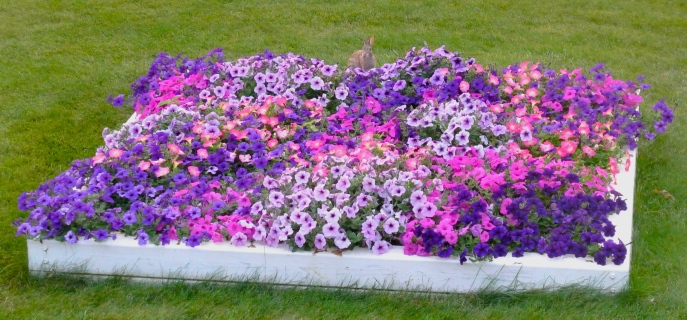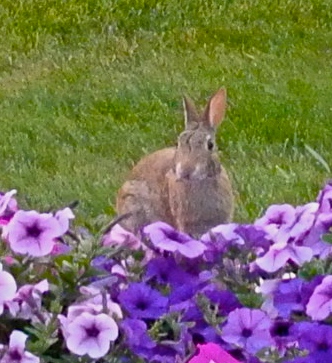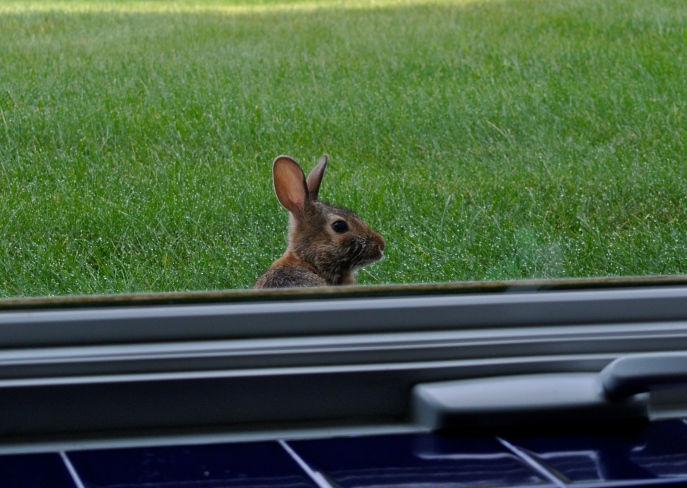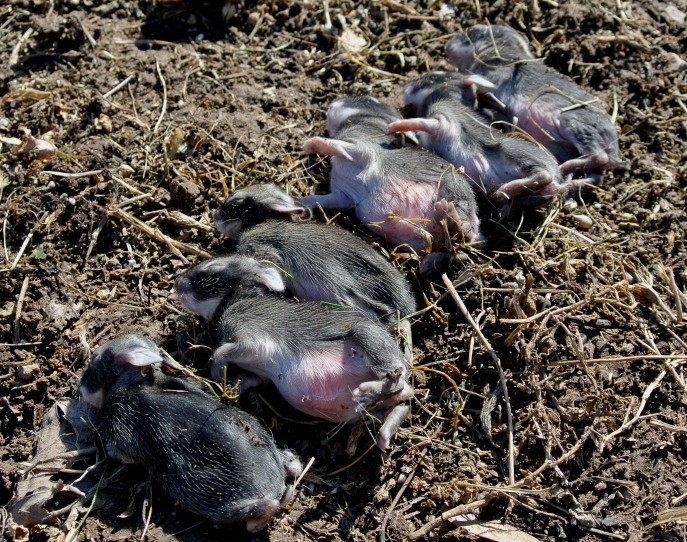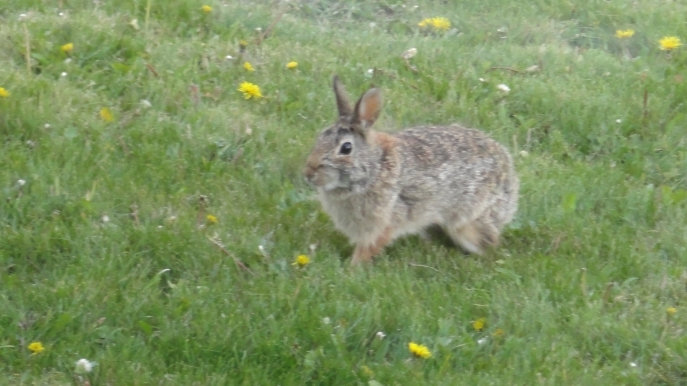The petunias can barely contain themselves in the flower box behind the house. Each one is a small poem written in pink, coral, or purple. And like all good poetry, the petunias both teach and delight.
My other yard poems are the geraniums. They have taught me two lessons. First, hummingbirds like them. Second, rabbits generally don’t. Part of the delight of geraniums comes from those same reasons.
Petunias, on the other hand, have taught me that rabbits see things differently than I do. To me, my white box of colorful petunias is a feast for the eyes; to the rabbits in the neighborhood, it’s a feast.
I like rabbits, and I enjoy watching them, but I don’t like them enough to let them eat my petunias. We had a long hard winter and several rabbits survived by eating the bushes in the back. The rabbits processed a good foot of each bush into scat, but I never complained.
Encouraged by my leniency, they thought it would be okay to eat my petunias. First, I tried soaping down the box, hoping the smell would deter them. Instead they sat in the box, munching away, with their sanitized paws. Naturally that gave me pause, so I sprinkled pepper around the box, hoping they would hotfoot out of the box and take their paws elsewhere. When that didn’t work, I thought it would make good sense to bring out the big PP, which stands for predator pee (or PredatorPee, a real company), which, of course, makes good scents for plant protection. And the best good scents for rabbits are bad scents, long-toothed and hungry bad, as in fox urine.
My husband found a different product that uses putrescent egg products to encourage the bunnies to forage elsewhere. The repellent works well and keeps the rabbits from seeing my flower box as an all-you-can-eat salad bar. When it rains, the spray dissipates and the rabbits come back, so it requires repeated spraying, which makes good cents for the company.
The rabbits still visit the yard, and I have seen them among the hostas in the early morning. We have developed a wary truce. The petunias are there to feed my soul, not their bellies. I plan to stop stewing about the flowers as long as they stay away; otherwise, I might start stewing the rabbit
